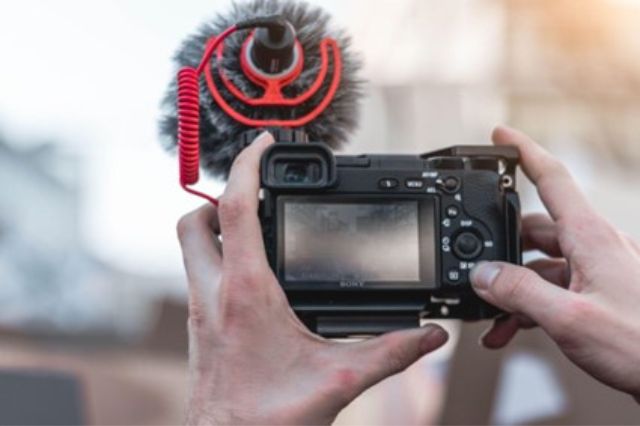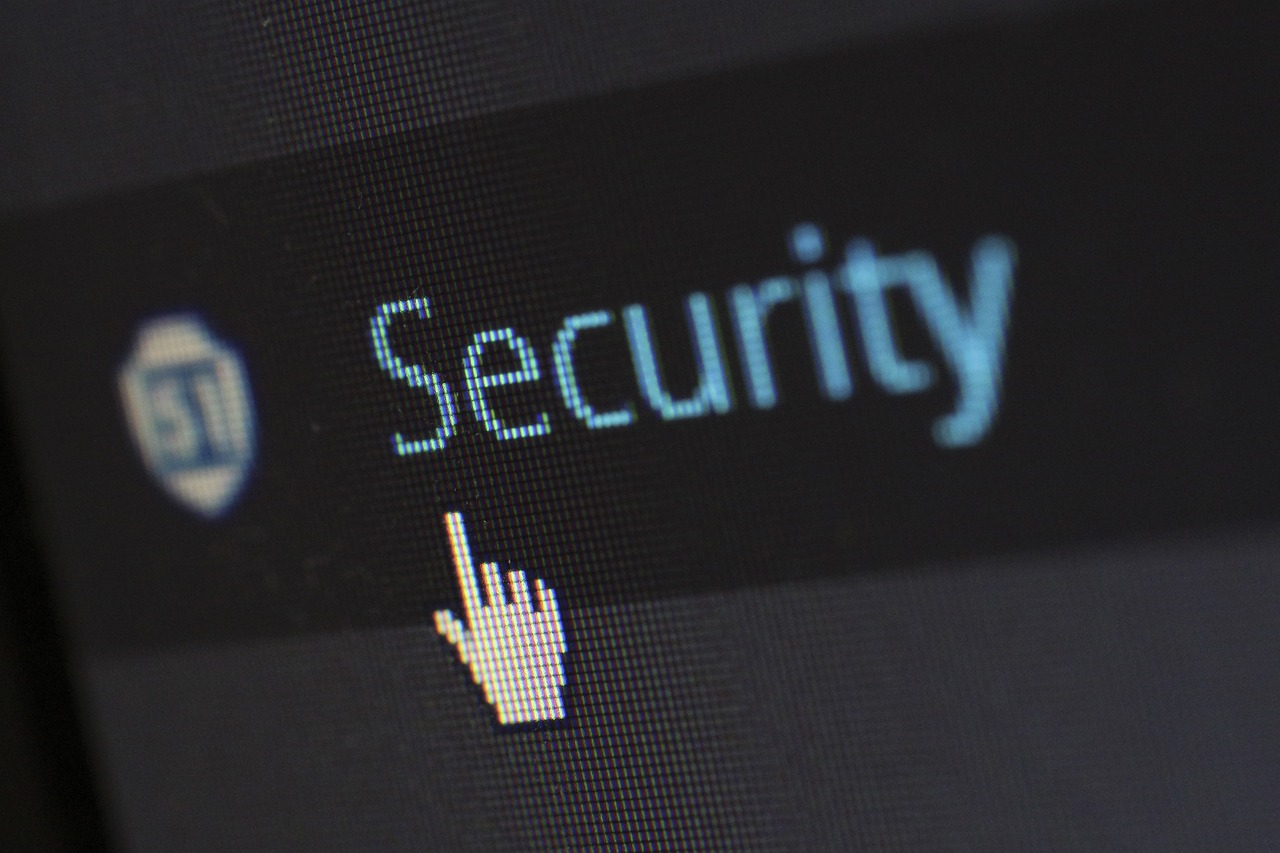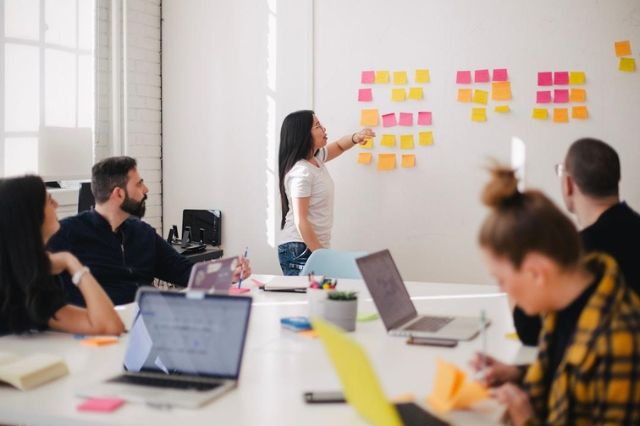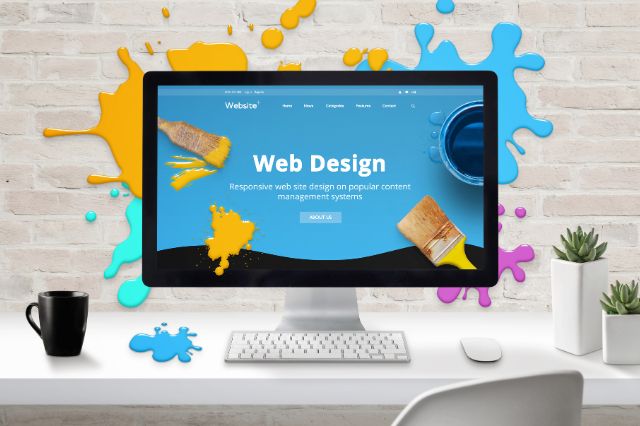Tech
How to Improve the Quality of Your Videos

You’ve got a video, and it’s ready to go! But before you press “upload,” there are a few things you’ll want to do to ensure your video is as high quality as possible.
Nowadays, most people prefer watching videos over accessing content via text or audio, so this is an aspect to pay attention to.
But first, let’s talk about what we mean by “quality.” Quality isn’t just about how clean and crisp everything looks in your video; it also has to do with how easy it is for viewers to focus on the action.
There are many ways to achieve this.
How to improve video quality
Pick up the right camera for the content you’re making, and let’s showcase some ways to make your videos better:
Focus on color
Color grading and color correcting are often used when editing a video, but there are some critical differences between them:
Color grading is often used in post-production editing to make images appear more interesting-looking or stylized, so they fit into certain moods. It is essentially used to achieve a certain aesthetic.
Color correcting entails making adjustments to correct any color casts or unwanted discoloration due to lighting conditions or other factors outside your control. It includes fixing mistakes in color balance, exposure, contrast, and other settings, and its purpose is to make colors look like they do in real life.
Make sure the audio quality is good
The sound quality of your videos will make or break them! Clear audio is an essential element that makes people interested in your videos. And that makes sense – if people need help understanding or hearing you well enough, they may become frustrated and turn away from your content altogether.
Try to record in an area with little or no echo at all. Also, turn off any other noises around you (like fans and air conditioning units), so the mic doesn’t pick those up.
Ah, and of course, don’t forget to buy a microphone – either one that can be attached to the camera or one you can plug into your computer/laptop.
You can also raise the volume or make your audio sound clearer in post (by editing). Just remember not to rely exclusively on editing but rather use it to enhance your audio quality.
If you want to get the best of both worlds, you can use Audacity to make edits to your audio and also record it.
Avoid shaky videos
If you want to improve the quality of your videos, you need to ensure they’re smooth. Shaky footage can be a big reason why people stop watching your videos; Luckily, it’s super easy to fix.
The best way to fix shaky video is by avoiding it altogether: you can do this by using a tripod or investing in some stabilization device (you can never go wrong with a 3-axis stabilizer).
If you don’t have any equipment available, try using a flat surface or a stack of books. Finally, you can quickly fix some shakiness in Premiere Pro after transferring your video to your laptop or computer.
Change the length of the video
If your video is too long, it might bore people and make them stop watching before they’ve learned anything. Longer also means larger file size and slower loading times for viewers across all platforms! Short videos cater to people’s short attention spans but may not engage or get people invested in your words.
In either case, the viewer will probably leave and never return.
The right video length depends on what kind of video you’re making and who your audience is. For example, If you’re creating an instructional video, research shows that most people prefer it to be between 3 and 6 minutes.
If you’re making a marketing video, the standard practice is to keep it short. Documentaries take time to get in-depth, so you’d need to make them longer than other types of videos.
The answer also depends on what platforms you’re using – for example, Instagram loves 26-second videos. Many platforms also have a length limit, so check the requirements before filming and uploading.
Focus on sound design
Sound design includes voice-over recordings, music tracks, background sounds, and sound effects. They can help draw attention toward what matters most—your message!
Music can help add emotion to your video and set a mood for what you’re trying to convey. You can use music in multiple ways: it can constantly play throughout the video or at certain times, like when someone says something important or does something funny.
You can also use effects to enhance the feeling of a scene— if you want it to feel more dramatic or humorous.
If you need help figuring out where to start with your sound design, you can get royalty-free music or effects from Soundstripe, so go to their website and start browsing!
Adjustments that you can make to improve video quality


Frame rate
Frame rate refers to how many frames per second (fps) your video is playing at; higher numbers mean smoother motion, but more storage space used by each video file.
Most of the time, people prefer a 60fps frame rate because it’s pleasing to the eye. But different frame rates are chosen for various purposes, so before picking one, you have to think about what feel you’re going for in your video.
For example, an action video would need to be slowed down to avoid motion blur – so 60 fps would work perfectly in this case; this is also ideal for slow-motion shots where you want to focus on a particular scene or for streaming (which is no surprise). In comparison, 24fps would be perfect if you want to achieve that cinematic look without compromising your storage.
Codec
Codecs are a way to compress and decompress a digital video to make storage and distribution easier. The H. 264 is a high-definition codec that works excellently for most technologies, so it’s incredibly versatile.
Aspect ratio
Aspect ratio refers to how wide or tall a video is. It’s ideal to think about your aspect ratio before shooting a video because any editing of the aspect ratio in post-editing will be very destructive.
A 16:9 aspect ratio is great for video because it allows you to fit more into the frame. You also want to pick the desired ratio according to the platform you will display it on. For example, the ideal Instagram aspect ratio is 4:3.
Bitrate
Bitrate determines how much data each video frame needs before being encoded. Higher bitrates mean better image quality but significantly larger file sizes and longer upload times.
Lower bitrates mean lower quality, but don’t compromise on storage and speed. As you’d expect, choosing the right bitrate is more challenging because different platforms have different requirements.
Resolution
The resolution you use in your camera will ultimately affect people’s viewing experience, so it’s best to go for a higher resolution rather than a low one. You can also improve low resolution by using video quality enhancers like Premiere Pro.
Final words on how to improve video quality
So, we’ve seen some ideal ways to improve the quality of your video, but here is some additional advice.
First, start by ensuring everything’s working properly before you start shooting.
Next, remember that no matter what equipment you’re using, you should always post-process your videos before uploading them onto any platform. You can do this by making transitions and adding music — whatever works best for you!
Another important thing is that you make your video accessible to most of your potential viewers. For example, did you know that most Facebook users view videos with the audio off? So adding text overlays or transcriptions is necessary if you want to engage their attention.
Use editing software to make your content creation process more seamless – most people will do just fine by using Premiere Pro for their computer. If you have a Mac, iMovie for PC is popular editing software that can help you out without giving you a headache.
Finally, think about the content itself. Are you providing helpful information? Is there anything missing from this video that might help someone else out? If so, add it! If you need more clarification, do some reflecting.
Have fun shooting!
Tech
Comprehensive Cloud Security Solutions in the Bay Area


As businesses increasingly migrate their operations to the cloud, ensuring the security of digital assets has become paramount.
Cloud security solutions in Bay area provide a framework to protect data, applications, and infrastructure from cyber threats. In the tech-savvy Bay Area, where innovation and technology thrive, robust cloud security measures are essential for safeguarding sensitive information and maintaining business continuity.
Understanding Cloud Security
Cloud security encompasses a broad range of technologies, policies, controls, and services designed to protect data, applications, and infrastructure in cloud computing environments. It addresses various security concerns, including data breaches, identity theft, and regulatory compliance.
Main Components of Cloud Security Solutions
Data Encryption
Data encryption ensures that information is encoded and can only be accessed by authorized users. Whether data is at rest or in transit, encryption is a critical component of cloud security, providing an additional layer of protection against unauthorized access.
Identity and Access Management (IAM)
IAM solutions help manage and control user access to cloud resources. By implementing strong authentication methods, such as multi-factor authentication (MFA), businesses can ensure that only authorized personnel can access sensitive data and applications.
Security Information and Event Management (SIEM)
SIEM systems provide real-time monitoring and analysis of security events. By collecting and analyzing data from various sources, SIEM solutions help identify potential threats and enable rapid response to incidents.
Cloud Security Posture Management (CSPM)
CSPM tools continuously monitor cloud environments to ensure compliance with security best practices and regulatory requirements. They help identify misconfigurations and vulnerabilities, allowing businesses to address security issues proactively.
How Cloud Security Solutions Work
Cloud security solutions integrate various technologies and practices to create a multi-layered defense strategy. Here are some real-world applications:
Data Encryption in Practice
A financial institution in the Bay Area uses data encryption to protect sensitive customer information stored in the cloud. By encrypting data at rest and in transit, the institution ensures that even if data is intercepted, it remains unreadable to unauthorized parties.
IAM for Enhanced Security
A tech startup implements IAM solutions with MFA to control access to its cloud-based development environment. This approach ensures that only verified developers can access the codebase, reducing the risk of unauthorized changes or data breaches.
SIEM for Real-Time Threat Detection
A healthcare provider utilizes SIEM to monitor security events across its cloud infrastructure. The SIEM system analyzes log data from various sources, detecting unusual activity and alerting security teams to potential threats, enabling quick incident response.
CSPM for Proactive Security Management
An e-commerce company employs CSPM tools to continuously assess its cloud security posture. The CSPM system identifies misconfigurations and compliance issues, allowing the company to address vulnerabilities before they can be exploited by attackers.
Benefits of Cloud Security Solutions
Investing in cloud security solutions offers numerous advantages for businesses in the Bay Area:
Enhanced Data Protection
Cloud security solutions provide robust measures to protect sensitive data from breaches and unauthorized access. This is particularly important for businesses handling confidential customer information or intellectual property.
Regulatory Compliance
Many industries have stringent regulations regarding data security and privacy. Cloud security solutions help businesses comply with these regulations, avoiding potential fines and legal issues.
Scalability
Cloud security solutions can scale with your business needs, providing consistent protection as your cloud environment grows. This flexibility is crucial for businesses experiencing rapid growth or fluctuating workloads.
Cost-Effective Security
By leveraging cloud security solutions, businesses can reduce the need for on-premises security infrastructure and associated costs. Cloud-based security services often offer a more cost-effective approach to maintaining robust security.
Improved Incident Response
With real-time monitoring and automated threat detection, cloud security solutions enable faster incident response. This minimizes the impact of security incidents and helps maintain business continuity.
Conclusion
In the dynamic and competitive landscape of the Bay Area, securing your cloud environment is essential for protecting sensitive data and maintaining business operations. Cloud security solutions, including data encryption, IAM, SIEM, and CSPM, provide comprehensive protection against a wide range of threats.
By investing in these solutions, businesses can enjoy enhanced data protection, regulatory compliance, scalability, cost-effective security, and improved incident response. Don’t leave your cloud security to chance—invest in robust cloud security solutions to safeguard your digital assets and ensure a secure future for your business.
Tech
What Is PSA Software Used for in Project Management?


In the complex world of project management, staying on top of every task, resource, and deadline is a formidable challenge. This is where Professional Services Automation (PSA) software enters the scene, offering a comprehensive solution that covers project management, time tracking, billing, and beyond.
Leveraging such a tool can significantly improve efficiency and streamline processes within any project-oriented organization. Below, we delve into the depths of PSA’s multifaceted role in project management, providing insights into why it is becoming an indispensable tool for professionals in this field.
Understanding PSA Software in the Context of Project Management


PSA software has become essential in modern project management, providing tailored solutions for professional services firms. By streamlining operations, enhancing collaboration, and providing detailed project insights, PSA tools enable managers and teams to execute projects with precision and strategic insight.
As project management demands evolve, the importance of PSA software in achieving successful outcomes becomes more evident.
PSA software, short for Professional Services Automation, is a comprehensive suite of tools designed to streamline project management for professional service providers. It integrates various functionalities such as resource allocation, time tracking, and financial management to support the entire project lifecycle from start to finish.
PSA software offers a holistic view of projects, enabling managers to make informed decisions and optimize project components for success. By centralizing communication and project data in real time, PSA minimizes the risk of errors and miscommunication.
Its goal is to simplify project management processes, allowing teams to focus on delivering quality services rather than being overwhelmed by administrative tasks. So, what is PSA software? It’s the key to efficient and effective project management for service-based businesses.
Core Functions of PSA Software: Streamlining Operations
PSA software offers a suite of essential functions for optimizing project management. Key features include project planning, time tracking, expense management, invoicing, and resource management.
Project planning and scheduling allow managers to map timelines and assign tasks accurately, setting the foundation for project success. Time tracking and expense management ensure accurate recording of work hours and project expenses, maintaining budget control and maximizing billable hours.
Invoicing and billing processes are streamlined, ensuring accurate and timely billing, accelerating cash flow, and reducing errors.
Resource management facilitates the efficient allocation of human and material resources, optimizing productivity and work quality by selecting the right team members for tasks based on availability and skillsets.
How PSA Software Enhances Collaboration and Resource Management


Effective project management relies heavily on collaboration, and Professional Services Automation (PSA) software plays a vital role in enhancing this aspect.
By centralizing information and communication on a single platform, team members can collaborate seamlessly, share updates instantly, and access project details without delays. This synergy is crucial for maintaining a cohesive workflow.
PSA software also greatly improves resource management by providing a comprehensive view of available resources, enabling managers to assign them effectively based on project requirements and individual competencies. It helps in optimizing resource utilization, ensuring a balanced workload, and maximizing productivity.
PSA software facilitates better client interaction through client portals or integration capabilities, fostering transparent communication and project tracking from the client’s perspective. This transparency builds trust and enhances client satisfaction and retention rates.
Measuring Project Success with PSA Software’s Reporting Capabilities
Monitoring the health and progress of projects is crucial, and Professional Services Automation (PSA) software excels in providing robust reporting capabilities for this purpose. These systems offer customizable reports tracking key performance indicators, financial metrics, and project statuses, essential for measuring and communicating success to stakeholders.
PSA software’s real-time data analytics empower managers to swiftly identify trends and performance across multiple projects, facilitating the evaluation of methodologies and strategies for continual improvement.
Beyond mere numbers, PSA reporting captures the project narrative, highlighting achievements, challenges, and lessons learned. It serves as a platform for celebrating milestones and guiding future initiatives.
By consolidating vast project data into accessible reports, PSA software promotes transparency and accountability throughout the organization. This fosters a culture where every team member can understand their contributions to larger projects and organizational goals.
Altogether, PSA software has become essential in modern project management, providing tailored solutions for professional services firms. By streamlining operations, enhancing collaboration, and providing detailed project insights, PSA tools enable managers and teams to execute projects with precision and strategic insight.
As project management demands evolve, the importance of PSA software in achieving successful outcomes becomes more evident.
Tech
Harness the Emotion of Color in Web Design


In the field of web design Houston-based agencies, those specializing in “web design Houston” recognize the significance of color, beyond its aesthetic appeal. By leveraging color psychology they can craft websites that evoke feelings, influence user perceptions, and establish brand identities.
For instance, a soothing blue color scheme can foster trust on a financial services site whereas a website selling kids’ toys might benefit from the vibes of yellows and oranges.
The appropriate choice of colors not only enhances the attractiveness of a website but also subtly steers users towards desired actions like subscribing to a newsletter or making a purchase. Colors play a role in solidifying an online presence.
Through the use of colors that align with the brand’s message and target audience preferences web designers, in Houston can develop websites that make an impact.
- Evolutionary Influence: Throughout history, color has carried survival significance. Reddish hues might have signaled danger (like fire), while greens indicated safe, resource-rich environments. These associations are ingrained in our subconscious and continue to trigger emotional responses.
- Psychological Impact: Colors activate different parts of the brain. Warm colors (reds, oranges) tend to be stimulating and energetic, while cool colors (blues, greens) have a calming and relaxing effect. This can influence our mood, focus, and even heart rate.
- Cultural Meanings: Colors also hold symbolic value shaped by culture and experience. For instance, red might symbolize love in some cultures and danger in others. These learned associations can influence how we perceive brands, products, and even entire websites.
- Perception of Space and Size: Colors can manipulate our perception of size and space. Lighter colors tend to make an area feel more open and airy, while darker colors can create a sense of intimacy or closeness.
Color Psychology: The Fundamentals
The field of color psychology examines how the colors we perceive can impact our thoughts, emotions, and actions. It investigates the connections we make with shades whether they stem from reactions (such, as the vibrancy of red) or cultural meanings we’ve learned over time (like the purity associated with white).
Having a grasp of color psychology fundamentals provides designers with a toolbox. They can intentionally select colors to establish the atmosphere of a website and evoke feelings such, as calmness or excitement. Even alter perceptions of space by utilizing light and dark shades.
- The Color Wheel: A quick recap of primary, secondary, and tertiary colors.
- Warm vs. Cool: Emotional associations of warm (red, orange, yellow) and cool (blue, green, purple) colors.
- Individual Color Meanings: Delve into the common symbolism of colors in Western culture (e.g., red – passion/danger, blue – trust, green – growth).
Crafting Harmonious Color Palettes: A Systematic Approach
Creating color palettes involves a mix of knowledge and gut feeling. Begin by grasping the color schemes; use colors (opposites, on the color wheel) for a lively look analogous colors (adjacent hues) for a cohesive feel, or triadic colors (three equally spaced hues) for a well-rounded vibe.
Online tools can be super helpful in crafting palettes and experimenting with combinations. However, it’s crucial not to overwhelm users. Aim for a blend of colors that work well together striking the balance of contrast, for readability and accessibility.
Think about your brand image and the message you want to convey through your website when choosing colors. A curated color palette forms the foundation of a coherent and captivating web design services.
Color plays a role, in web design going beyond just the way it looks. By considering the psychological impact of color choices designers can evoke emotions direct users around a website strengthen brand recognition and create a memorable user experience.
A thought-out color scheme should align with the purpose of the website – using soothing colors for a healthcare site and lively shades for a kid’s brand – helping websites stand out in an online world.
Utilizing colors effectively can elevate a website from being visually attractive to being an instrument that influences user behavior positively and leaves a lasting impact.
- Emotional Impact: Color directly taps into our emotions, influencing how users feel as they interact with your website. Warm colors excite, cool colors calm, and the right combinations evoke specific feelings associated with your brand.
- Guiding the User: Strategic color use draws attention, creates emphasis, and improves usability. Contrasting colors make buttons pop, helping guide users towards your desired actions.
- Branding and Messaging: Your color palette becomes a core part of your brand identity. Users develop immediate associations, whether that’s the calming trustworthiness of a doctor’s office website or the playful energy of an online toy store.
- Standing Out: In a sea of websites, a well-designed color scheme makes you memorable. It separates you from competitors and creates a lasting impression that resonates with your target audience.
-



 Captions3 years ago
Captions3 years ago341 Sexy Captions to Fire Up Your Instagram Pictures
-



 Captions3 years ago
Captions3 years ago311 Night Out Captions for Instagram and Your Crazy Night
-



 Captions3 years ago
Captions3 years ago245 Saree Captions for Instagram to Boost Your Selfies in Saree
-



 Captions3 years ago
Captions3 years ago256 Best Ethnic Wear Captions for Instagram on Traditional Dress
-



 Captions3 years ago
Captions3 years ago230 Blurred Picture Captions for Instagram
-



 Captions3 years ago
Captions3 years ago275 Deep Captions for Instagram to Express Your Thoughts
-



 Quotes3 years ago
Quotes3 years ago222 Nail Captions for Instagram to Showcase Your Fresh Manicure
-



 Captions3 years ago
Captions3 years ago211 Laughing Captions for Instagram | Laughter Is the Best Medicine







